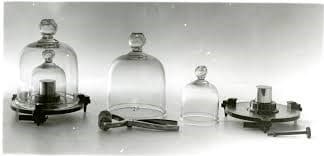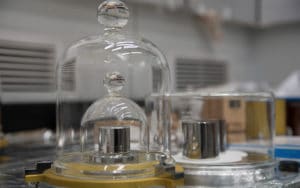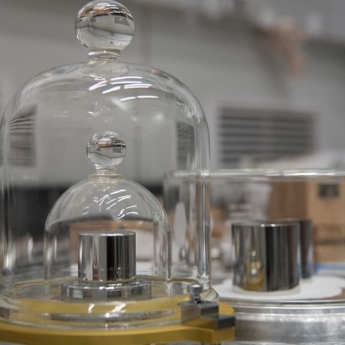The Kilogram has been Redefined
On Friday, November 16, 2018, more than 60 scientists from around the world met to vote on the future of kilogram measurement in Versailles, France. The vote was unanimous in changing the standard of measurement from a piece of metal that has been around since 1989, to a constant and more precise measurement system. This measurement system is known as the Kibble Balance, and it will improve the accuracy of force measurements, as well as peace of mind for every original equipment manufacturer and product developer across the world.
History of the Kilogram
 For more than 100 years, the kilogram was defined by a platinum alloy cylinder known as “Le Grand K,” which is kept safe in Paris. For all those years, the cylinder had to be replicated and sent around the world to measurement agencies who provide the measurement standard for manufacturers and engineers. And every year, those replicants needed to be sent back to Paris to be recalibrated to the Le Grand K. However, there were always slight deviations between the replicants and the Le Grand K. Another issue was that the Le Grand K was remeasured in the 1980s and was found to weigh a few micrograms less than when it initially set the standard in 1989. This discrepancy changed the entire global measurement system and forced manufacturers to reissue their weights. The unpredictability of the Le Grand K is what eventually led to the November 16 vote to change the definition for which the kilogram is weighed.
For more than 100 years, the kilogram was defined by a platinum alloy cylinder known as “Le Grand K,” which is kept safe in Paris. For all those years, the cylinder had to be replicated and sent around the world to measurement agencies who provide the measurement standard for manufacturers and engineers. And every year, those replicants needed to be sent back to Paris to be recalibrated to the Le Grand K. However, there were always slight deviations between the replicants and the Le Grand K. Another issue was that the Le Grand K was remeasured in the 1980s and was found to weigh a few micrograms less than when it initially set the standard in 1989. This discrepancy changed the entire global measurement system and forced manufacturers to reissue their weights. The unpredictability of the Le Grand K is what eventually led to the November 16 vote to change the definition for which the kilogram is weighed.
Creating a Constant with the Kibble Balance
What is important for Interface, as well as engineers and manufacturers everywhere, is that we now have a constant, industry standard measurement system as long as we have access to a Kibble Balance. The Kibble Balance works by precisely measuring the weight of an object by the strength of the electric current and voltage needed to produce a compensating force. This measurement system is accurate to within roughly one part per billion. By ditching the Le Grand K for the Kibble Balance, we don’t have to base our measurements on a physical object that can change over time. We can define the kilogram based on the fundamental constants of nature.
Why is this Important?
 The measurement of force is critical to product development. And the more complex a system becomes, or the smaller the components are that you are weighing, the higher the standard is for accuracy. Take a blood thinning application for example. Pharmaceutical companies are weighing compounds as small as mere micrograms and if the standard in which they are weighing against is off by even a little bit, causing high uncertainty, it can result in significant risk to patients.
The measurement of force is critical to product development. And the more complex a system becomes, or the smaller the components are that you are weighing, the higher the standard is for accuracy. Take a blood thinning application for example. Pharmaceutical companies are weighing compounds as small as mere micrograms and if the standard in which they are weighing against is off by even a little bit, causing high uncertainty, it can result in significant risk to patients.
For Interface, our load cells are often used by our customers to measure rocket thrust to lift a payload, or for brake pad sensors in a car. If the level of uncertainty is high and the measurement is off product could be faulty, or in the worst-case scenario, the product cause harm to the user. Using the Kibble Balance and the new definition for weighing of a kilogram, Interface is able to lower uncertainty, design higher tolerances, gather better data and help our customers increase overall confidence in the products they develop.
We’d love to talk more about the Kibble Balance, Interface load cells and all the ways we can help lower uncertainty in your force measurement process. Give us a call at 480-948-5555, or learn more in our application notes.
By Ted Larson, Director of Product Development, Interface



